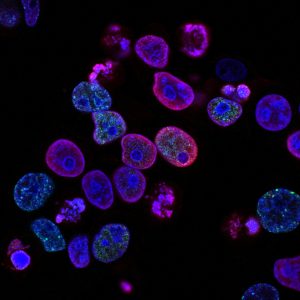Researchers at the University of Miami recently performed a review of pre-existing scientific literature on 5-ALA, a substance used to improve detection and treatment of the brain tumours by increasing the fluorescence of cancer cells while being observed during photodynamic therapy.
This treatment has been used to improve overall survival of people with high grade glioma in the past and so this review is important in determining the reliability and expected outcomes of using 5-ALA to treat brain tumour.
How does the treatment work? 
5-ALA is a compound that is made into a liquid solution and swallowed by the patient. It then accumulates within the brain tumour and surrounding glioma cells, before being metabolised and causing the cells to become fluorescent. Penetrating the blood brain barrier to do so in the process.
Then, a specific wavelength of light is used to target the patients glioma cells which will highlight the now fluorescent cells. This helps the neurosurgeon more accurately perform resection, as well as monitor progress of the tumour.
What was found by the review?
The studies and trials that utilised 5-ALA were found to be linked to greater overall survival and more successful resection of high grade gliomas. It was said to be particularly useful option when the safety of the patient is preserved.
Additional studies are currently working to make 5-ALA more commonplace and further reinforce the findings of this reviewed literature for firmer confirmation of its viability.
If you would like to use your experience and insight to support clinical research, consider signing up to be a PRIME advocate for brainstrust.
If you or someone you love is living with a brain tumour and have any questions around this latest news, or want to access support, give us a call on 01983 292 405 or email hello@brainstrust.org.uk. You can also visit our little brainstrust website which features support for children affected by brain tumour.





